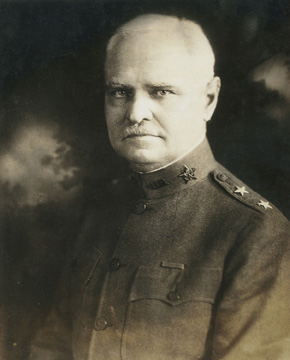An Army Engineer Officer Oversaw the Construction of the Panama Canal
 |
| George Goethals |
It is well known that the Panama Canal was built ahead of schedule, below budget, and with no corruption. If any one person can be credited for this achievement it is George W. Goethals, the project’s chief engineer, 1907−15.
In 1904 the Americans took over the failed French effort to build a canal at the Isthmus of Panama. The first two chief engineers, both civilians, resigned after short tenures. President Theodore Roosevelt announced that the next chief would be an Army officer, who, if he walked off the job, would find himself facing a court martial. The man selected was Maj. George W. Goethals of the U.S. Army Corps of Engineers.
Born of Belgian immigrant parents in Brooklyn, N.Y., in 1858, Goethals graduated from West Point in 1880; his high standing entitled him to a commission in the Corps of Engineers. In addition to engineering duties in the Spanish-American War, he acquired rich experience in several civil works projects that involved the building of canals, locks, and dams. As a member of the Isthmian Canal Commission, he visited the Canal Zone in 1905. He so impressed Roosevelt and Secretary of War William Howard Taft that they chose him for the chief engineer’s position after the resignation of the second chief, John F. Stevens.
Stevens had been much loved by those who had been laboring on the canal. They worried that Goethals (soon to be Lieutenant Colonel and later Colonel) would impose a military regime. He dispelled these fears by appearing only in civilian clothing and inviting all workers to talk freely with him regarding any grievances.
Goethals reported only to the president and secretary of war, who placed few limits on his powers. Traveling in a railroad car known as the “Yellow Peril,” Goethals regularly oversaw the work at the various construction sites. These included two dams, six sets of locks, two artificial lakes, regulating works, entrance channels, breakwaters, telephone and telegraph systems, a hydroelectric station, a rebuilt railroad, and the excavation of the challenging Culebra Cut.
Although the canal was not, strictly speaking, a Corps of Engineers project, several talented engineer officers serving on detail under Goethals held key positions. Some found him distant and demanding. Nevertheless, he gained their respect if not their love.
The completion of the canal in 1914 made Goethals an American hero and international celebrity. After serving as the Canal Zone’s first governor, he retired in 1916 as a major general. He returned to active duty during World War I, at which time he became acting quartermaster general and head of the War Department’s Division of Purchase, Storage, and Traffic, in which capacities the hard-driving Goethals performed logistical miracles. Returning to civilian life, he served as consulting engineer for a number of important operations, including the Port Authority of New York.
Goethals, undeniably one of America’s great builders, died in New York City in 1928.
"The creation of a water passage across Panama was one of the supreme human achievements of all time, the culmination of a heroic dream of over four hundred years and of more than twenty years of phenomenal effort and sacrifice. The fifty miles between the oceans were among the hardest ever won by human effort and ingenuity, and no statistics on tonnage or tolls can begin to convey the grandeur of what was accomplished. Primarily the canal is an expression of that old and noble desire to bridge the divide, to bring people together. It is a work of civilization."
"The Path Between the Seas," David McCullough,
Pulitzer Prize-winning author and historian

* * *
April 2007